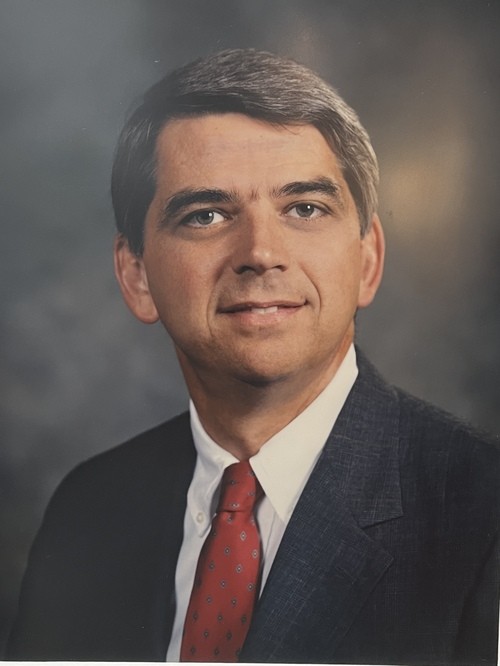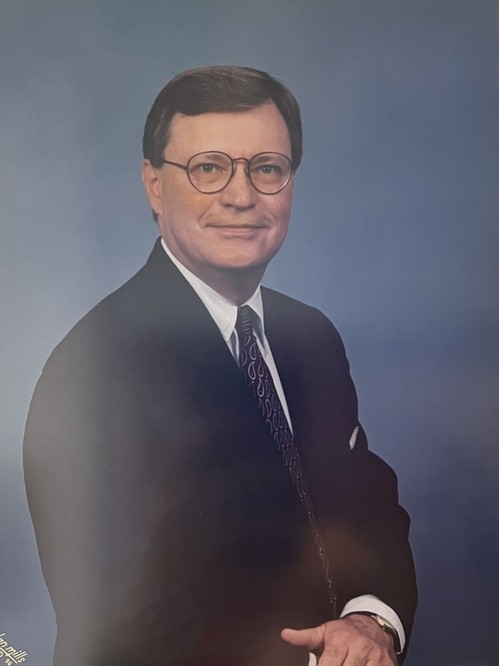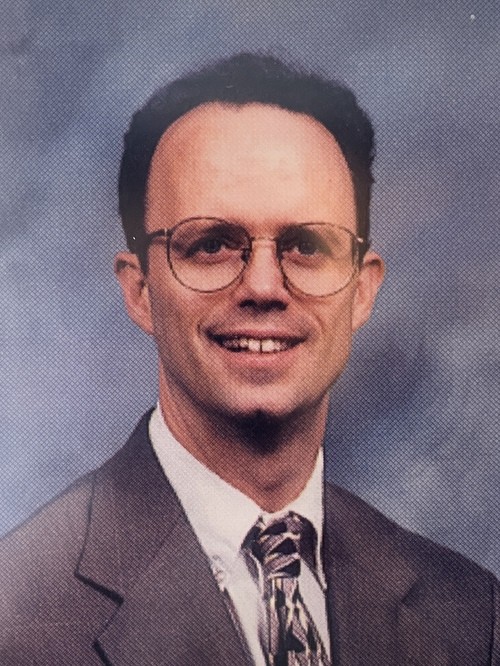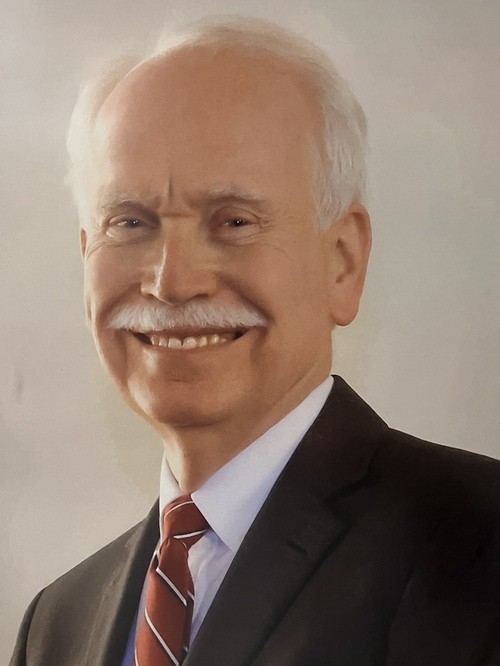C. 1800-1824 FOunding Era

- Early 1800s - Rev. Gideon Blackburn moves across the Old Southwest planting Presbyterian churches among early pioneer communities. His main base of operations is along the Harpeth River near Franklin, TN. He also seeks to establish missions among various American Indian nations, notably the Cherokee and Creek Nations.
- 1818 - Our future first pastor, Dr. Alexander Augustus Campbell, moves to Huntsville from Virginia with his wife Sarah and their children. He experienced Christian conversion in 1811 while attending medical school in Philadelphia. Dr. Campbell continued to practice medicine in north Alabama, assisting churches in both settler and Indian communities. Soon thereafter, he began to receive theological training from Gideon Blackburn.
- 1820 - The community of "Occocopassa" is incorporated above Big Spring, near the newly-built Jackson's Military Road. Many Scots-Irish settlers start moving to the area. By 1822, the town is renamed "Tuscumbia" in honor of a Chickasaw elder (Tushka-ambi - "warrior who kills") who had assisted many of the early settlers.
- 1823 - Rev. Thomas C. Stuart, a missionary from the Synod of South Carolina, sets up a Presbyterian mission west of Cane Creek inside the boundaries of the Chickasaw Nation. This small mission will inspire a more permanent church to be established in Tuscumbia.
- 1824 - The First Presbyterian Church in Tuscumbia is established.
- Dr. Campbell receives a calling from Gideon Blackburn to establish a church in Tuscumbia. He moves with his pregnant wife and family from Huntsville by February.
- March 21, 1824 - The first communion service is held.
- April 13, 1824 - A small group of 13 men and women organize the church in the ballroom of the Challen House, an inn at present-day 6th Street and Main Street just above the Big Spring. Rev. Blackburn presides. Dr. Campbell is installed as the first pastor, though he will itinerate among other Presbyterian churches in Florence and Russellville. The first ruling elders are Arthur Beatty and James Elliott, both born in Scotland in 1799. Other charter members included Susan Winston, Elizabeth Johnson, Ann Beatty, Alexander W. Mitchell, Eliza Mitchell, Sarah Mitchell, and Thomas Limerick, the first mayor of Tuscumbia.
1824-1827: Alexander A. Campbell
- 1825 - The Presbytery of North Alabama is created.
- 1826-1827 - Construction begins on the current sanctuary, which incorporates Federalist-style architecture with neo-Gothic elements, such as the arched windows. The Flemish-bond style brick is identical to that of Belle Mont, a cotton plantation south of town owned by Dr. Alexander W. Mitchell, a charter member of the church. It is likely that enslaved labor from the Mitchell plantation was used in the construction of the sanctuary.
- 1827 - The church's official land grant is signed by President James Monroe on June 5. The sanctuary is completed and opens for worship gatherings. The original pews would've been "box pews" more common to colonial-era churches on the eastern seaboard. The original pulpit stood high to emphasize the importance of preaching the Word of God.
1827-1830: George W. Ashbridge
- Rev. George W. Ashbridge, educated at Princeton Theological Seminary, becomes the first full-time resident pastor, while Dr. Campbell continues to serve in pulpit supply ministry around the region. Ashbridge moves to Tuscumbia around age 27 as a single man and soon after marries Christina Mitchell, the daughter of charter member A. W. Mitchell of Belle Mont plantation.
- November 1827 - Several hundred Creek Indians led by chief Chilly McIntosh come through Tuscumbia on the first of many removals to Indian Territory over the next decade. According to oral tradition, the church members organized food and clothing relief to the hungry and destitute Creeks who were encamped near Big Spring.
- 1828 - A camp-meeting revival takes place on LaGrange Mountain, southeast of Tuscumbia. Several new members join the church.
- 1830 - Rev. Ashbridge receives a call to become the minister of First Presbyterian Church in Louisville, KY. Only a few years thereafter, Ashbridge fell ill and died at the age of 33.
1830-1831: T. M. Arnell
- 1831 - T.M. Arnell will fill the pulpit supply starting at the New Year.
1831-1837: James Weatherby
- June 1831 - James Weatherby installed as the next full-time pastor.
- 1837 - A controversy at General Assembly over the issues of revivalism and social activism creates a split in the national Presbyterian Churches between "New School" (pro-revival and involvement in cultural issues) and "Old School" (pro-stricter adherence to Calvinist orthodoxy and the Westminster Standards). The church in Tuscumbia will side with the Old School theology, eventually branching off as the Old School "Presbytery of Tuscumbia."
1837-1845: James Steadman

- 1837 - James O. Steadman, a graduate of Princeton Seminary, is ordained by the North Alabama Presbytery and installed as the next pastor of the church. He serves until 1845, after which he served churches in North Carolina and Pennsylvania, and eventually organized the Alabama Street Presbyterian Church in Memphis, TN.
- 1837-1838 - Three detachments of Cherokees forced along the Trail of Tears pass directly by the church on board the Tuscumbia, Courtland & Decatur Railroad.
- 1839 and 1843 - Rev. Daniel Baker, a nationally known Presbyterian evangelist, visits Tuscumbia, prompting revival and growth in membership.

Rev. Daniel Baker

June 13, 1845
1848-1850: Noble A. Penland
- 1849 - Organ music is first introduced into the church's worship. The first organ is installed by Johann Koehnken of Cincinnati, OH.
1852-1856: C. F. Williams
- 1853 - FPCT plants an Old School Presbyterian church in Decatur, AL.
1856-1860: Abram L. Kline
- 1860-1861 - The election of Abraham Lincoln creates a secession crisis throughout the South. A church member of FPCT, Judge John A. Steele, is appointed as a delegate to the Secession Convention in Montgomery. He voted against secession from the Union. However, when the Civil War erupted the following April, Steele, along with many other residents in this area, fought in the defense of his state.
1861-1872: Benjamin N. Sawtelle

- 1861 - Rev. Benjamin N. Sawtelle is installed as the church's pastor, 29 years old with his wife Eugenia and a 3 year old daughter, as a horrific Civil War engulfs the country. The Shoals will change hands between the Union and Confederacy several times throughout the war, but the church never ceases its worship services.
- 1861 - The Old School denomination initially sought to remain unified, but after a divisive vote in General Assembly to demand loyalty to the federal government, our presbytery repudiated the measure, split from the Northern Old School, and joined the Presbyterian Church in the Confederate States of America in December 1861. Following the war, this would be known as the Presbyterian Church in the United States (PCUS), better known as the "Southern" Presbyterian denomination.
- 1862 - Dr. W.H. Mitchell, minister of the sister Presbyterian church in Florence, is arrested and taken to federal prison for praying for the Confederacy during a pastoral prayer. Following Mitchell's arrest, Rev. Sawtelle ceased praying publicly for the Confederacy, as there were Union officers present in the congregation.
- 1865 - The Presbytery of Tuscumbia meets for the first time after a hiatus during the war.
- 1867 - Due to political divisions over Reconstruction, the northern half of Franklin County splits to create Colbert County. Tuscumbia becomes the new county seat.
1872-1873: H. E. Brown
1873-1877: Horace p. smith
- 1873 - Rev. Horace P. Smith arrives from Virginia and is installed as pastor. He had previously served as a chaplain in the Confederate Army
- 1874 - An F4 tornado devastates Tuscumbia on November 22, destroying around 100 homes and killing 12, including members of the church. The sanctuary is damaged, but permanent metal rods are installed above the balcony (still visible today) to maintain the integrity of the brick walls.
- 1877 - Rev. Smith dies suddenly in ministry. Read his obituary, written by the session clerk, here.
1878-1895: james g. Lane

- 1878 - The Ladies' Aid Society and the Ladies' Missionary Society are both organized at FPCT. They will eventually reorganize in 1913 as the Women's Auxiliary, eventually changing the name to Women in the Church (WIC), the current women's ministry.
- 1879 - read a letter from a visitor to the church describing a typical Sunday morning worship service, published in The North Alabamian
- 1879 - The Ladies' Aid Society at FPCT raised funds to purchase a property near the church, the site of the former Tuscumbia Female Academy, where several FPCT ministers served as principal instructor. Here, they constructed the first church manse.
- 1880s - Renovations are made to the sanctuary. The original box pews are removed, and the pulpit is lowered to its current position.
- 1883 - A yellow fever epidemic sweeps through the region, killing many in Tuscumbia. Rev. Lane attends to the home of the Keller family, who were members of FPCT, whose young daughter, Helen Keller, would lose her vision and her hearing from the viral disease.


Helen Keller
1896-1899: R. J. Beatty


1899-1903: James DARNALL Wallace
- 1899 - The young Rev. James D. Wallace is ordained by the North Alabama Presbytery and receives his first pastorate at Tuscumbia. During his ministry, he edited and published The Presbyterian Visitor, with news and views of the church as well as the town, at a subscription rate of 25 cents per year.
1903-1926: Wilson F. Trump

- 1903 - Rev. Wilson Trump, originally from Pennsylvania and formerly principal for Tuscumbia city schools, receives the call to ministry, ordained in 1902, and the next year installed as the pastor of FPCT.
- 1904 - The church celebrates its 80th Anniversary. The original windows are replaced with the current stained glass windows.
- 1906 - The first son of the church to go into ministry, Albert Sidney Johnson, is ordained. His mother and father, Carrie Bell Johnson and John W. Johnson, lead, respectively, the women's and men's Sunday School classes. Carrie Bell Johnson also served on the Board of the Alabama Presbyterian Home for Children. After her death, a scholarship fund was created in her honor to support seminary training for church members seeking full-time Christian work.


July 14, 1927
- 1918 - The current church annex is erected adjacent to the sanctuary, replacing the original session room. The annex allowed for multiple Sunday School rooms and originally contained the pastor's office.
- 1924 - The church celebrates its Centennial. Rev. Trump's letter of invitation read, "One Hundred years of Church Life - Witnessing and Laboring for the Master! Such is the record of our Church, and it is fitting that we, with one accord, should assemble to acknowledge God's goodness and mercy to us and to honor the memory of the noble spirits who have gone on, and into whose labor we have entered..." A banquet was served to 400 attendees in the church annex!
- 1926 - Rev. Trump dies in ministry after prolonged illness. He remains the longest-serving pastor of the church at 23 years. According to his obituary, "The commercial, civic and social life of Tuscumbia paused for one hour Monday afternoon to pay a last tribute of love its most beloved citizen, Rev. Wilson F. Trump -- a scholar, a man of letters and a true Christian gentleman.... with all local business houses closing for the services."

1926-1929: William Crowe IV

- Vacation Bible School is first instituted.
- A church mission is established at Pride Station, AL.
1930-1933: William V. Gardner

- 1930 - The Great Depression has just started by the beginning of Rev. Gardner's tenure. He starts out with a salary of $2,400, but by 1933, the salary is reduced to $2,000, and the church is in debt, and church membership begins to decline.
- Read Rev. Gardner's statements on the proper approach to worshipping God here.
1934-1942: Charles F. McRae

- c. 1935 - the entire church budget is $2,500, and Rev. McRae's salary is $1,800 and is rarely paid on time.
- 1939 - World War II begins. Multiple church members will be drafted and see active service.
- 1940 - a congregational meeting adopted a resolution reaffirming opposition to any possible union of the Northern and Southern Presbyterian Churches (which was in discussion at the General Assembly but ultimately rejected).
- 1941 - A day of prayer and fasting was called for in June as war rages around the world, and the United States approaches closer to direct military involvement.

January 17, 1941
1942-1950: Adrian E. DeYoung

- c. 1942 - During World War II, the church membership had dropped to 131 and the budget continued to be strained ($600 deficit on a budget of $3,100).
- 1950 - Church membership and finances had rebounded by God's blessing. The annual budget grew to over $10,000.
1950-1955: Bruce H. Wideman

- Church membership climbs to over 200.
- The church purchases a former private residence by the Rowland family and converts it to a youth house.
- The church begins a radio broadcast of its evening services to three counties in northwest Alabama (our first forerunner to church livestream and sermon podcast!)
1955-1967: James H. Patterson

- 1963 - The original Victorian manse is demolished to build the current manse.
- 1960s - The church's education building (fellowship hall and basement) is constructed.
- 1968 - FPCT hires its first youth director, initially a summer appointment only. Dianne DeYoung, daughter of former pastor Adrian "Bob" DeYoung, serves as the first youth director.

1969-1985: Ronald L. Siegenthaler

- 1973 - The Session at FPCT officially departs from the PCUS and the North Alabama Presbytery after years of leftward drift and apostasy within the Southern Presbyterian (PCUS) denomination. Read the session's 1973 official letter to the presbytery here. The Presbyterian Church in America (PCA) is formed from as a continuing branch of conservative orthodoxy and holds its first General Assembly at Briarwood Presbyterian Church in Birmingham, AL, but FPCT will remain an independent church for 15 years.
- 1983 - A second floor to the education building is constructed and named for Dr. E.S. Gregory, a former church deacon and mayor of Tuscumbia.
- 1984 - Rev. Siegenthaler promotes a vision for a Christian school to be established in Colbert County.
- 1985 - Covenant Christian School is established as a ministry of the church.
1985-1987: George W. Mitchell

- c. 1986 - The church purchases an office across Broad Street to use as the new church office. It is named the Wilson F. Trump Memorial Building.
1988-1995: Richard "WoodY" Markert

- 1988 - Through Rev. Markert's leadership, the congregation voted to join the Presbyterian Church in America (PCA).
- c. 1990 - The church purchases the former McCorkle House on 5th Street to serve as the Youth Director's residence.
1996-2002: Jerry R. Robbins

- 1996 - Due to increased numbers, two morning worship services were created that October. However, this was only a short term solution. A prayerful decision would be made to plant a daughter church in Florence.
- 1999 - Twelve families from FPCT move to help establish Redeemer Church of the Shoals
- 2002 - Covenant Christian School graduates its first senior class.
- 2002 - A son of the church, Dr. Joel Linton, goes on the mission field to Taiwan, where he has since served with his family for many years, planting several churches among the Taiwanese.
2002-2024: Randy E. Thompson

- 2002 - In November, Dr. Randy Thompson accepts the call to come to Tuscumbia. He was formerly ministering at Westminster Presbyterian Church in Greenwood, Mississippi.
- Dr. Thompson institutes monthly observance of the Lord's Supper and fellowship meals. A weekend Missions Conference is also created, remaining an annual tradition.
- 2009 - Providence Presbytery is formed in northern Alabama, allowing for greater organization of church plants. Dr. Thompson spearheaded the efforts.
- 2016 - A new church wing is added housing a large classroom, the church nursery, restrooms, and greater accessibility.
- 2020 - The global COVID-19 pandemic wreaks havoc across the globe and the churches in America. Through God's mercy and Dr. Thompson's leadership, FPCT continued steadfast in devotion to worship and ministry. A church livestream was first instituted.
- 2023 - FPCT is honored when Dr. Thompson delivers the opening sermon at the PCA General Assembly in Memphis, where he preached on Lamentations 3:22-24. Watch the recording here.
- 2024 - FPCT celebrates its Bicentennial on April 20-21. Saturday featured a churchwide lunch under a tent in the church parking lot. Sunday morning's worship service featured a guest sermon by Dr. Ligon Duncan of Reformed Theological Seminary. Following the service was a hymn-sing led by pianist Daniel Cason of Birmingham.

2024-Present: Jeff L. Hamm
